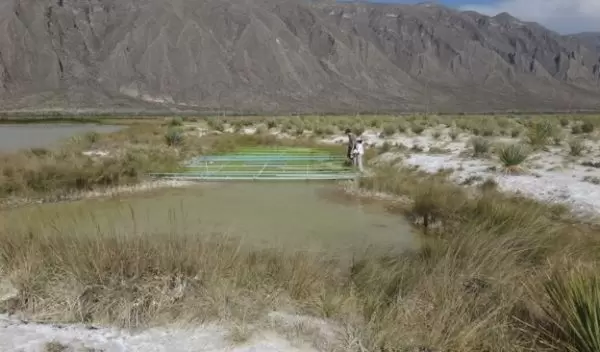
Rules of life: From a pond to the beyond
The Cuatro Ciénegas Basin in the Chihuahuan Desert of Mexico was once a shallow sea. Some 43 million years ago, it became separated from the Gulf of Mexico. The basin is nutrient-poor and harbors a "lost world" of aquatic microbes of ancient marine ancestry.
Because of these characteristics, it is an invaluable place for researchers to study and understand how life may have existed on other planets in our solar system.
In a National Science Foundation-funded study published in the journal eLIFE, a team of researchers at Arizona State University conducted experiments in the basin.
Their goal was to shed light on how an organism's genome -- its size, the way it encodes information, and the density of information -- affects its ability to thrive in an extreme environment.
For their experiment, the scientists conducted field monitoring, sampling and routine water chemistry testing for 32 days in a shallow, nutrient-poor pond called Lagunita.
They installed mesocosms, or miniature ecosystems, that served as a control group and remained separate from the rest of the pond. They then added fertilizer that was rich in nitrogen and phosphorus to increase microbial growth in the pond.
At the end of the experiment, the scientists examined how the community in the pond changed in response to the additional nutrients, focusing on the organisms' ability to process biochemical information in their cells.
Ultimately, the researchers found that indeed a nutrient-enriched community became dominated by species that could process biochemical information at a faster rate, whereas the original low-nutrient community harbored species with reduced biochemical information processing.
"We were able to identify and confirm that there are fundamental genome-wide traits associated with systematic microbial responses to ecosystem nutrient status, without regard to the species identity of those microbes," says Jim Elser, an ecologist at ASU and paper co-author.
What this may suggest for life on other planets is that organisms, no matter where they are, need information-processing machinery fine-tuned to the key resources around them.
"This study provides new insights into how microbes adapt to different types of environments, and the tradeoffs they may face in doing so," says Doug Levey, a program director in NSF's Division of Environmental Biology.


